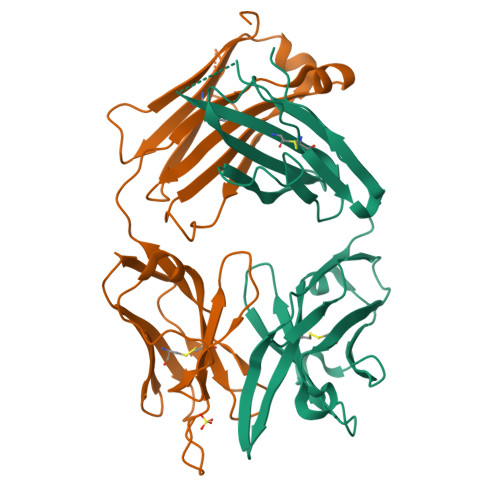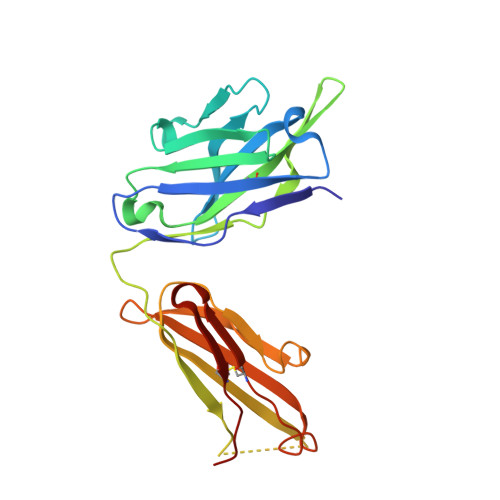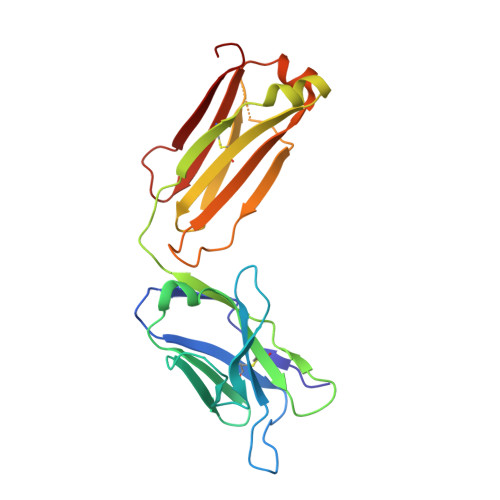B-Cell Epitopes in GroEL of Francisella tularensis.
Lu, Z., Rynkiewicz, M.J., Madico, G., Li, S., Yang, C.Y., Perkins, H.M., Sompuram, S.R., Kodela, V., Liu, T., Morris, T., Wang, D., Roche, M.I., Seaton, B.A., Sharon, J.(2014) PLoS One 9: e99847-e99847
- PubMed: 24968190
- DOI: https://doi.org/10.1371/journal.pone.0099847
- Primary Citation of Related Structures:
4PB0, 4PB9 - PubMed Abstract:
The chaperonin protein GroEL, also known as heat shock protein 60 (Hsp60), is a prominent antigen in the human and mouse antibody response to the facultative intracellular bacterium Francisella tularensis (Ft), the causative agent of tularemia. In addition to its presumed cytoplasmic location, FtGroEL has been reported to be a potential component of the bacterial surface and to be released from the bacteria. In the current study, 13 IgG2a and one IgG3 mouse monoclonal antibodies (mAbs) specific for FtGroEL were classified into eleven unique groups based on shared VH-VL germline genes, and seven crossblocking profiles revealing at least three non-overlapping epitope areas in competition ELISA. In a mouse model of respiratory tularemia with the highly pathogenic Ft type A strain SchuS4, the Ab64 and N200 IgG2a mAbs, which block each other's binding to and are sensitive to the same two point mutations in FtGroEL, reduced bacterial burden indicating that they target protective GroEL B-cell epitopes. The Ab64 and N200 epitopes, as well as those of three other mAbs with different crossblocking profiles, Ab53, N3, and N30, were mapped by hydrogen/deuterium exchange-mass spectrometry (DXMS) and visualized on a homology model of FtGroEL. This model was further supported by its experimentally-validated computational docking to the X-ray crystal structures of Ab64 and Ab53 Fabs. The structural analysis and DXMS profiles of the Ab64 and N200 mAbs suggest that their protective effects may be due to induction or stabilization of a conformational change in FtGroEL.
Organizational Affiliation:
Department of Pathology and Laboratory Medicine, Boston University School of Medicine, Boston, Massachusetts, United States of America.


















